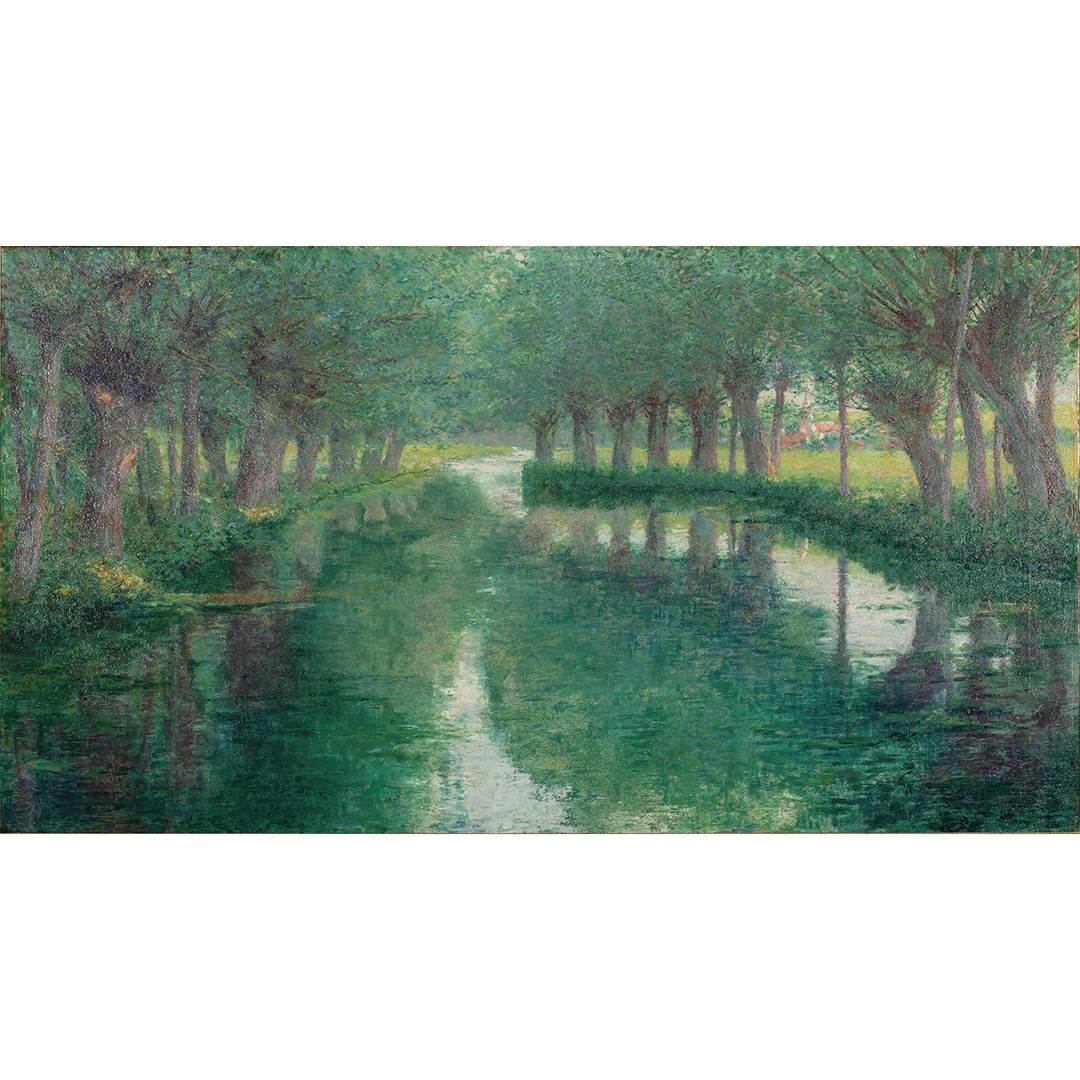
(1860 - 1899)
L'Epte, Giverny, around 1887-1891
Oil on canvas, 60,6x 111,8 cm
Giverny, Museum of Impressionisms, donation from the Terra Foundation for American Art, Daniel J. Terra Collection in 2016, MDIG 2016.1.1
This work dates from John Leslie Breck's first stay in Giverny, when he began to practice plein-air painting in the area around the village. A tributary of the Seine, the Epte flows through Giverny, inspiring many of the artists' compositions. With its orderly construction and subtle harmonies of greens, the canvas bears witness to Breck's solid academic training. Yet the choice of motif - a view of the river through undergrowth and reflections on the water - as well as the fragmented brushstrokes, are indicative of the artist's adherence to the Impressionist aesthetic. The high horizon line, the truncated framing and the original point of view, which places the painter in the middle of the river, also give this work a modern allure.
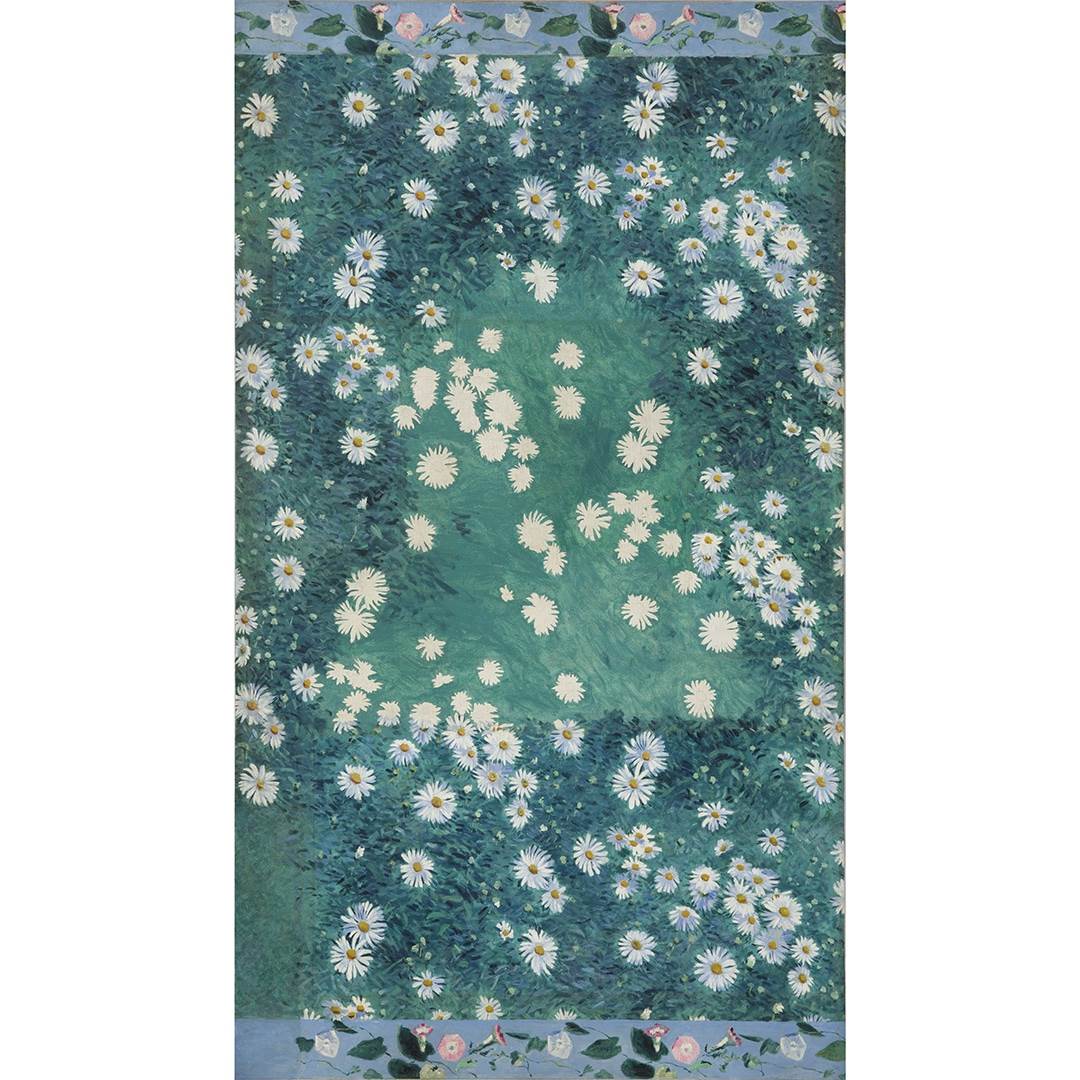
(1848-1894)
Parterre de marguerites, around 1893.
Oil on canvas, 205 x 116 cm
Giverny, Museum of Impressionisms, acquired through the generosity of the Caisse des Dépôts, Caisse d'Épargne Normandie, SNCF Réseau, Friends of the Museum of Impressionisms Giverny, and a public subscription in 2016, MDIG 2016.2.0
© Giverny, Museum of Impressionisms / F. Doury
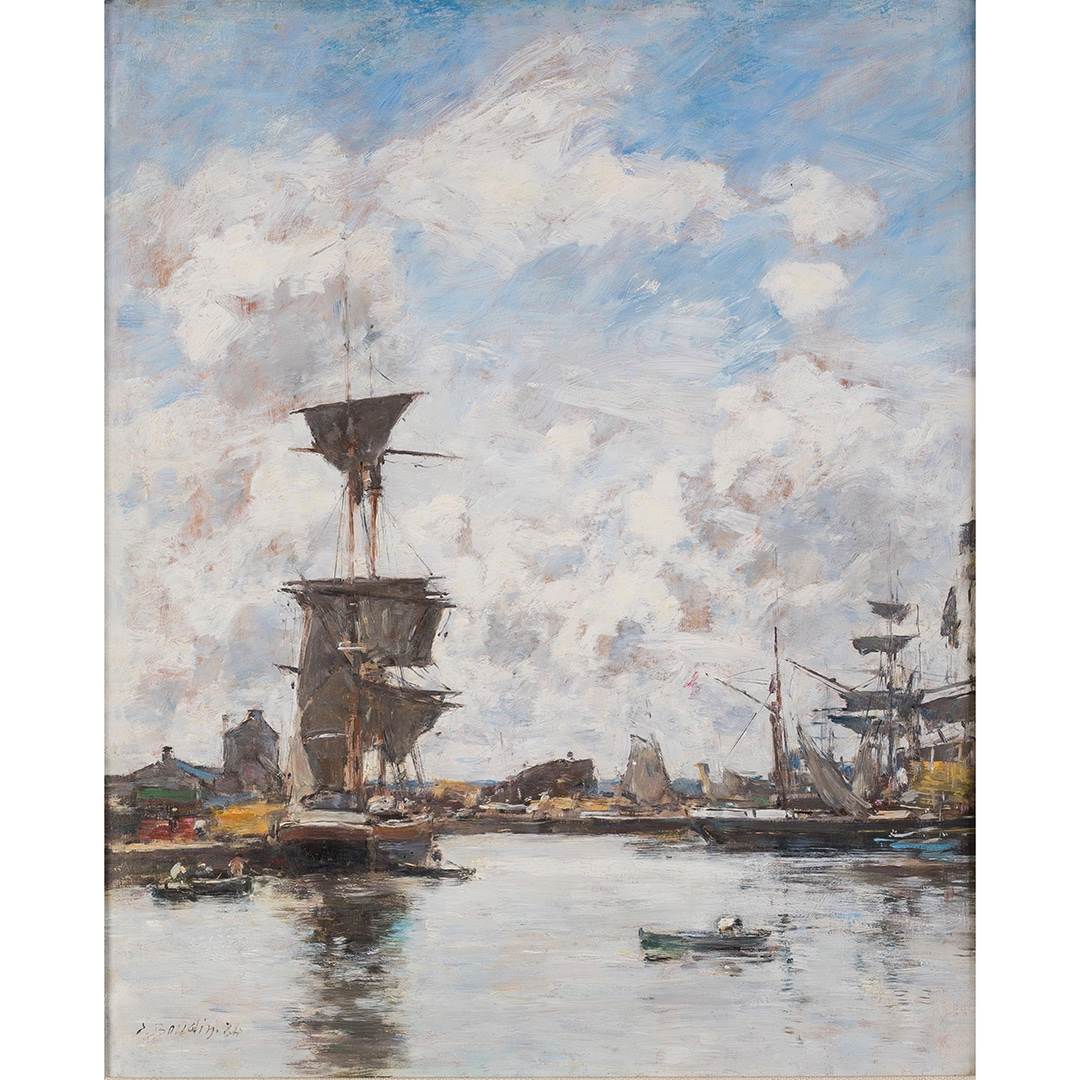
EUGENE BOUDIN
(1824-1898)
Deauville, le bassin, 1884
Oil on wood, 46,5 x 38 cm
Giverny, Museum of Impressionisms, acquired through the generosity of the Circle of Patrons of the Museum of Impressionisms Giverny, Caisse d'Épargne Normandie, and Quadra Consultants in 2020, MDIG 2020.1.1
© Giverny, Museum of Impressionisms / J.-C. Louiset
Painter of seascapes and 'skies,' Eugène Boudin embodies a singular location: the coastal Normandy around Deauville and Trouville. Tireless observer of late 19th-century beach life, he epitomizes en plein air painting. He participated in the first exhibition of Impressionist works in 1874 at Félix Nadar's. Close to Johan Barthold Jongkind and Claude Monet, whom he advised to study on location, Boudin captures in his works the hustle and bustle of the small ports along the coast. He meticulously records atmospheric variations, nuances of light throughout the seasons, as well as sailboats setting out to sea and the social life on the beach. 'Deauville, the Basin' is part of a series Boudin created in the 1880s around the basins of Deauville, Fécamp, Honfleur, or Trouville. In this work, he plays with the contrast between the imposing mast of the sailboat in the harbor and the vastness of the sky. The view is taken at water level, with the perspective structured by large horizontal and vertical lines. Extraordinarily, a luminous gap on the left illuminates the entire scene, which comes to life with rapid brushstrokes.
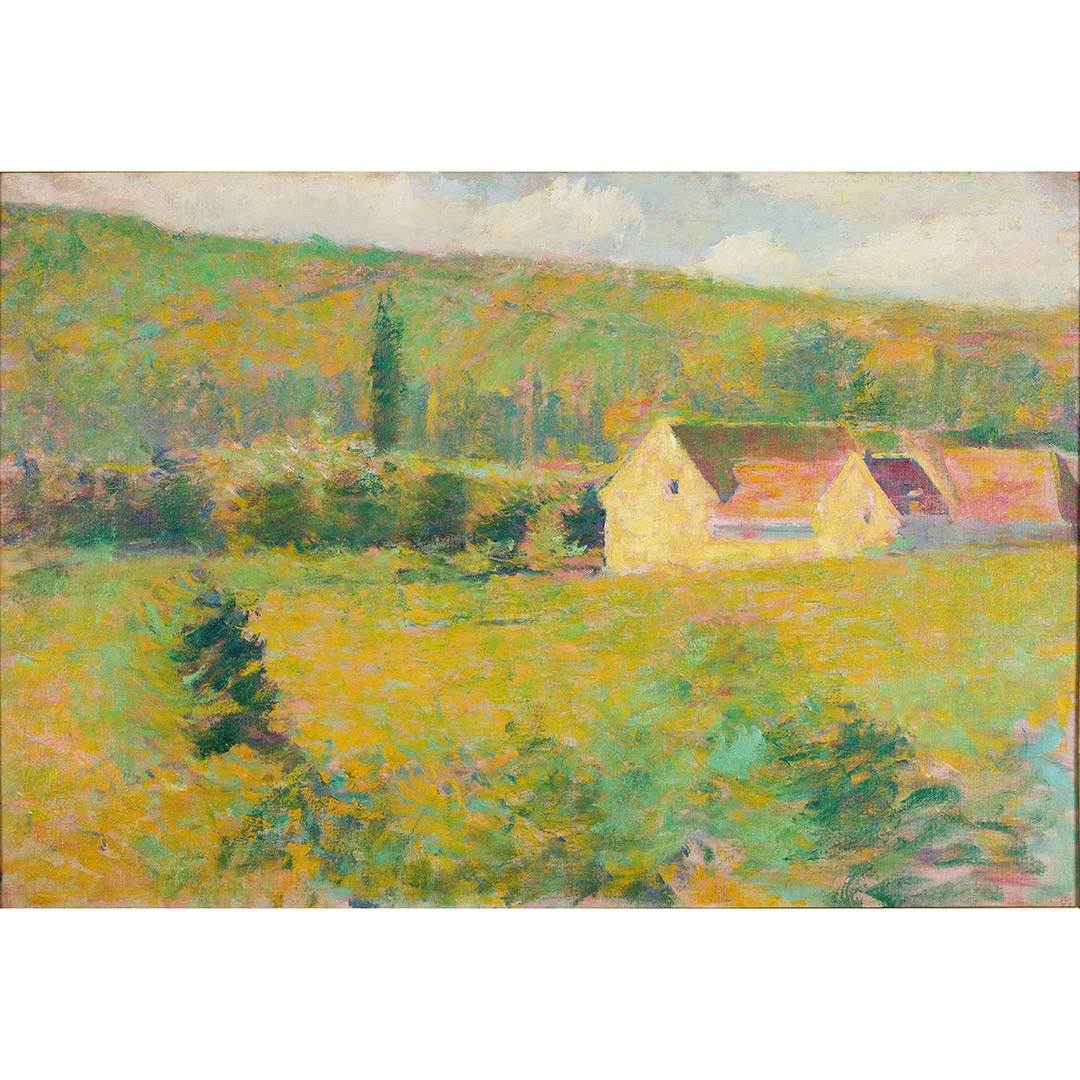
THEODORE EARL BUTLER
(1861-1936)
La Ferme de la Dîme à Giverny, around 1907
Oil on canvas, 50 x 73 cm
Giverny, Museum of Impressionisms, purchase in 2022, MDIG 2022.3.1
© Giverny, Museum of Impressionisms / J.-C. Louiset
In 1888, Theodore Butler discovered Giverny and was among the first American painters to stay in the residence of Claude Monet. Within the colony of foreign artists forming in the small Norman village, few were fortunate enough to frequent the intimate circle of the Impressionist master and work alongside him. Butler was one of these privileged few, even going so far as to marry one of the painter's stepdaughters, Suzanne Hoschedé, in 1892. Previously heavily influenced by the works of Pierre Puvis de Chavannes and Carolus-Duran, Butler's oeuvre evolved through his contact with Monet: he now painted outdoor scenes and portraits executed en plein air, using broad strokes of color. Settled in Giverny between 1900 and the eve of the First World War, he multiplied views of his garden and the village, of which this work likely constitutes a valuable testimony.
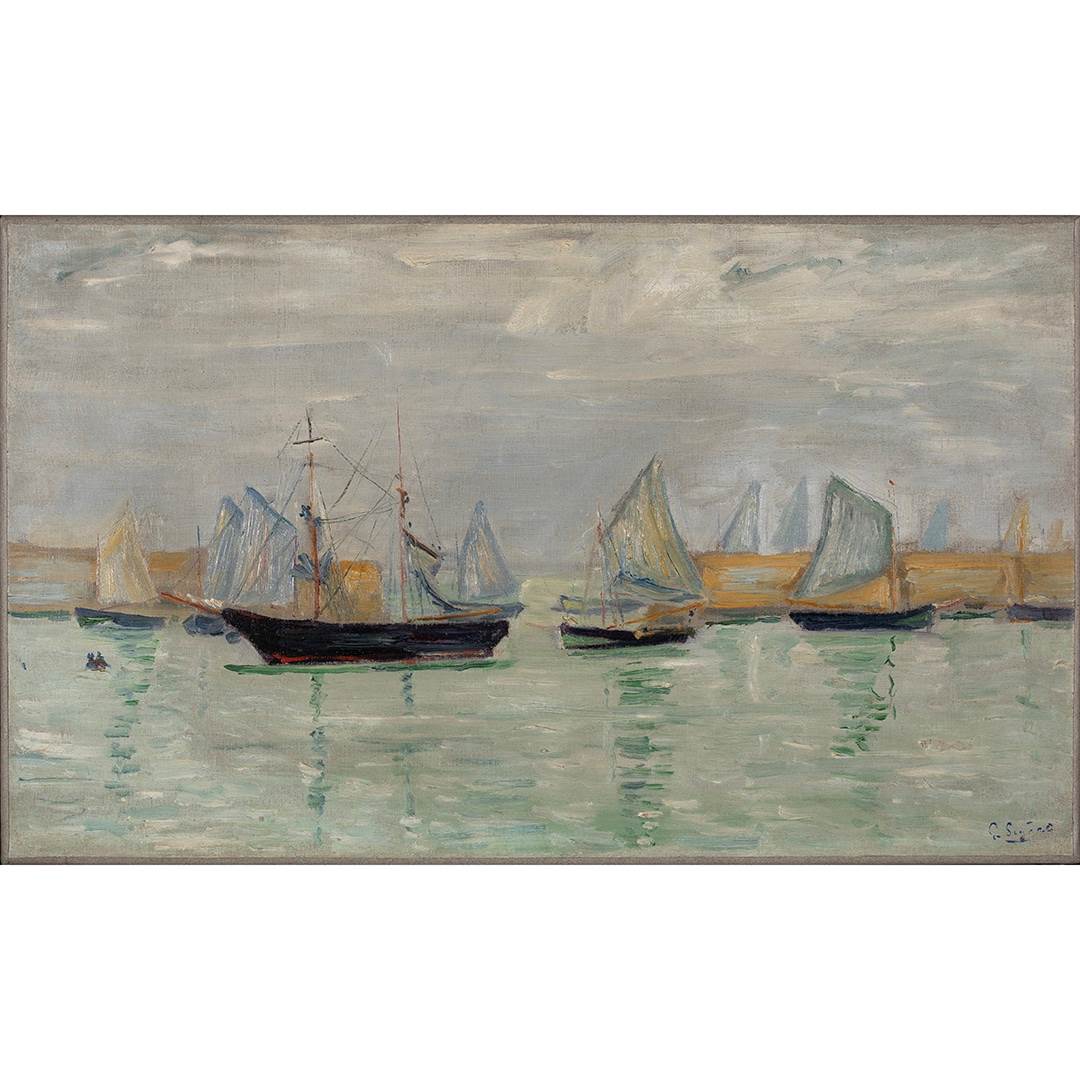
PAUL SIGNAC
(1863-1935)
Étude Port-en-Bessin (étude n°5, l'avant-port), 1882
Oil on canvas, 32 x 55,5 cm
Giverny, Museum of Impressionisms, donation from Charlotte Hellman Cachin in 2019, MDIG 2019.2.1
© Giverny, Museum of Impressionisms / J.-C. Louiset
At a very young age, Paul Signac developed an interest in painting, particularly in the Impressionist works he admired in Parisian galleries. In 1880, he visited Claude Monet's first solo exhibition and decided to follow in his footsteps. Unlike other painters he would later collaborate with, Signac did not undergo formal academic training; instead, he taught himself by studying Impressionist paintings to understand their techniques and use of color. In 1882, not yet eighteen, he spent his first summer as a painter in Port-en-Bessin, on the Normandy coast. There, he conducted a campaign in the style of Monet, focusing on representing the quays, the port, and above all, the seaside, which allowed him to explore the effects of light on the water's surface. In this work, while the theme and treatment of the landscape testify to Monet's influence, Signac's penchant for frontal, orderly compositions with little perspective foreshadows his own personal style.

MARY COLMAN WHEELER
(1846-1920)
Thé au jardin, 1910
Oil on canvas, 84 x 74 cm
Giverny, Museum of Impressionisms, donation from Richard Warren Wheeler and Betty Ann Owens Wheeler kids, thanks to Robert Martin and Wheeler School, Providence Rhode Island, USA, MDIG 2023.4.1
© Giverny, Museum of Impressionisms / J.-C. Louiset
Mary Colman Wheeler was born into the progressive and abolitionist milieu of Concord, Massachusetts, home to philosophers Henry David Thoreau and Ralph Waldo Emerson, as well as writer Nathaniel Hawthorne. Starting in 1866, she taught mathematics and Latin at Concord High School, then in Providence, Rhode Island. In 1870, she traveled to Germany, Italy, and France to study painting. Upon returning to Providence, she founded an art school for young women in 1882. From 1887, she took her students to France for summer painting courses. Between 1907 and 1912, she rented the Hameau in Giverny and played an important role in the artistic colony of the village, frequenting Claude Monet and the Butler family. This painting inspired by the gardens of Giverny was generously donated to the Musée des Impressionnismes Giverny by the artist's descendants in 2023.




